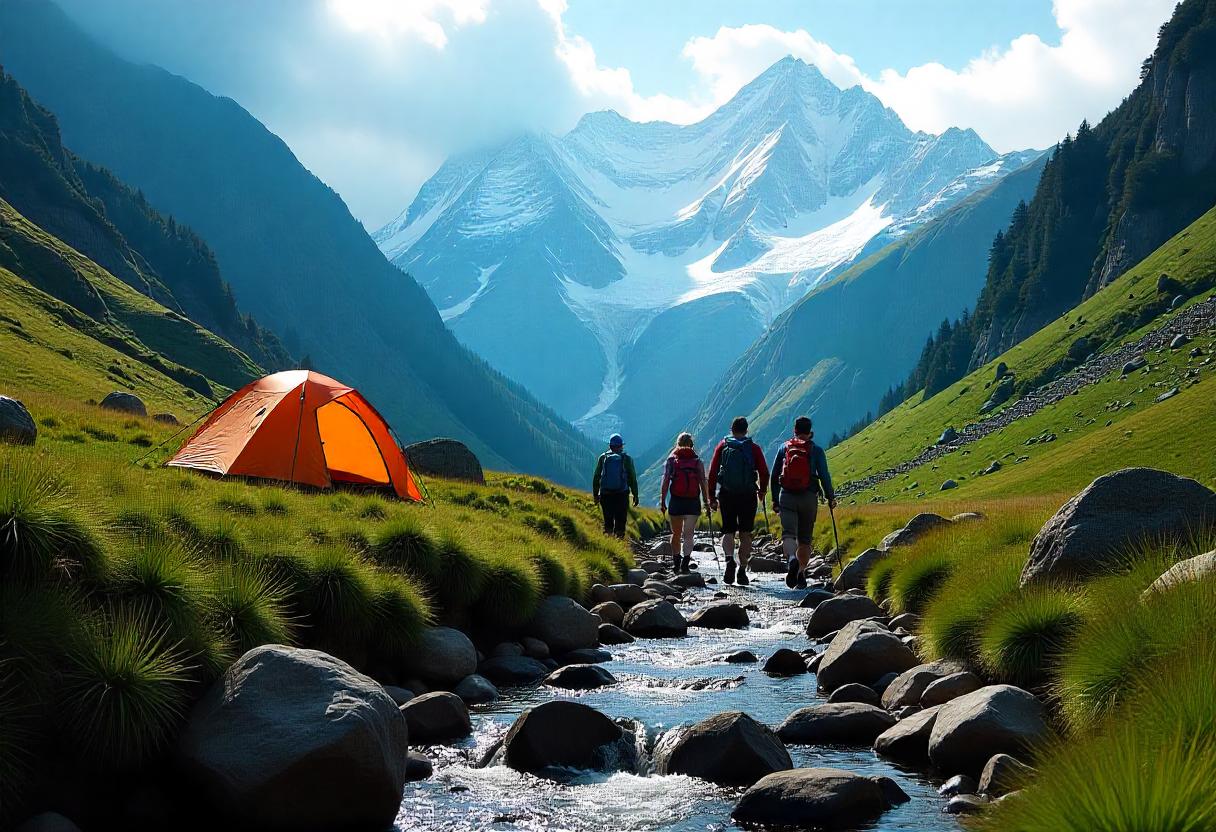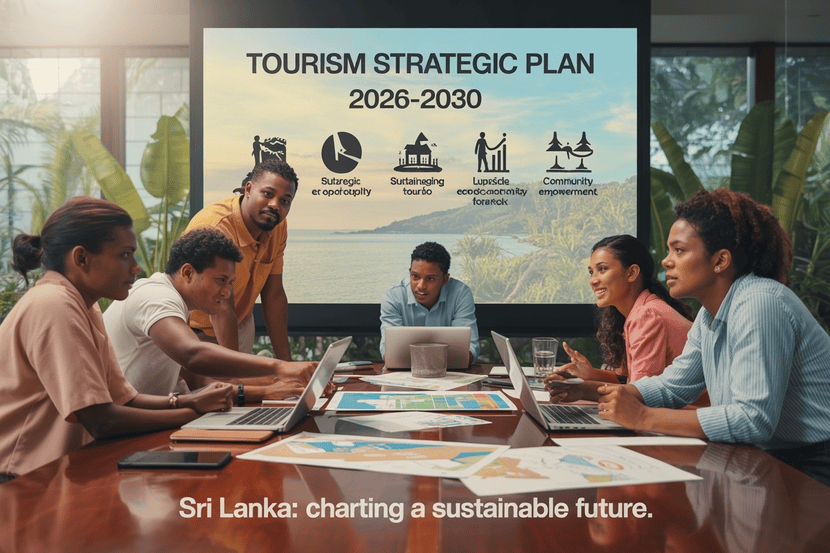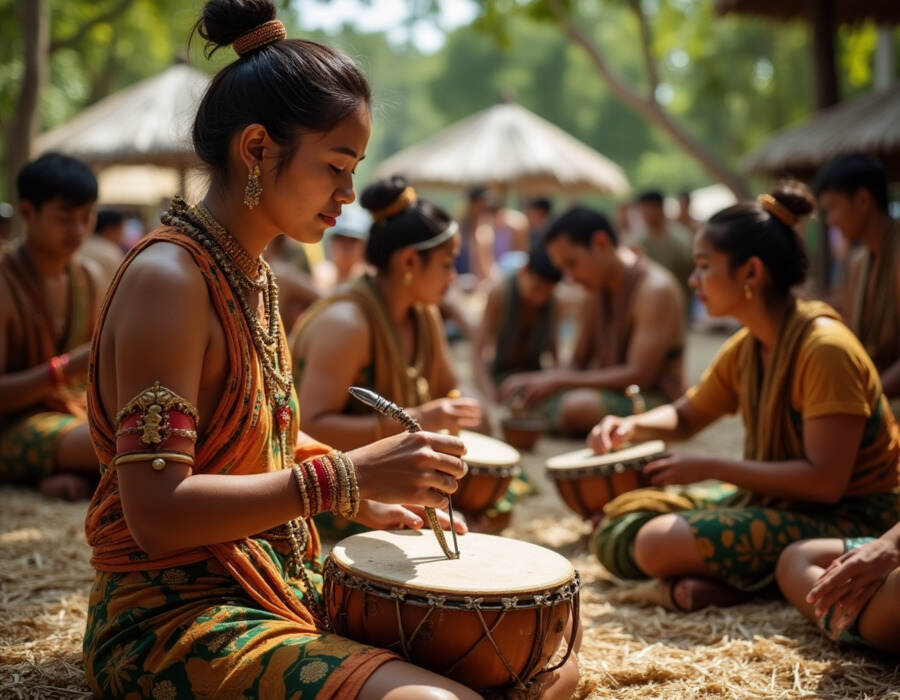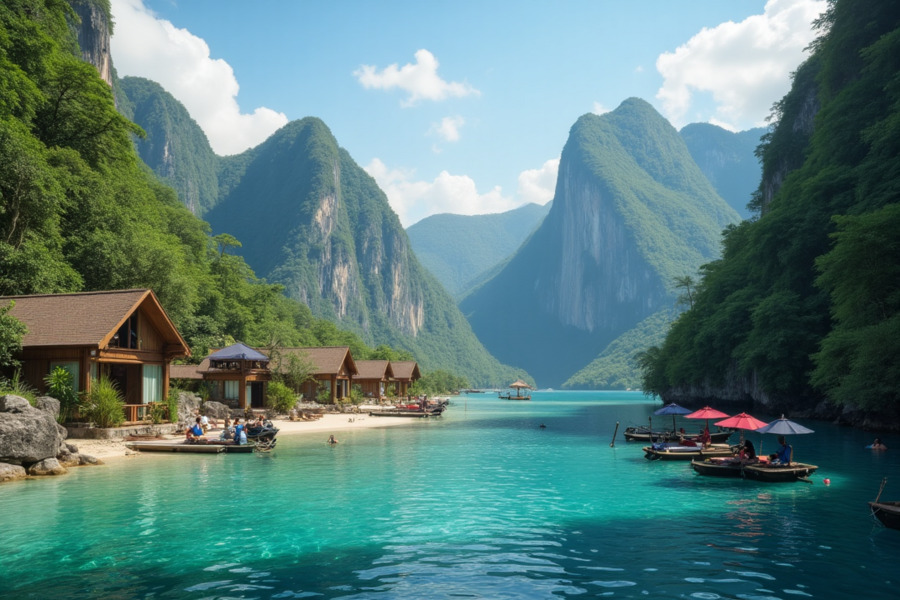≡-Global Adventure Tourism Market Booms to Over One Trillion USD by 2032 as Demand for Thrilling Experiences Skyrockets with a CAGR of Over Fifteen Percent – Viral of Today
<> Viral of Today <>
Home » Adventure Travel News » Global Adventure Tourism Market Booms to Over One Trillion USD by 2032 as Demand for Thrilling Experiences Skyrockets with a CAGR of Over Fifteen Percent Tuesday, June 10, 2025The global adventure tourism market is on a record-breaking growth path, projected to exceed one trillion USD by 2032, fueled by an explosive surge in demand for thrilling, experience-driven travel. As more travelers prioritize adrenaline-filled escapes, immersive nature activities, and sustainable tourism over traditional holidays, the industry is expanding rapidly across all regions. With a robust compound annual growth rate (CAGR) of over fifteen percent, adventure tourism is reshaping the future of global travel, unlocking vast opportunities for destinations, operators, and eco-conscious consumers alike.The global appetite for adventure is reaching new heights—quite literally. From solo mountain treks to eco-friendly retreats in the heart of rainforests, modern travelers are increasingly trading traditional vacations for experiences that ignite both adrenaline and mindfulness. The result? The global adventure tourism market is on an explosive trajectory, set to surpass a staggering USD 1.34 trillion by 2032, growing at an impressive compound annual growth rate (CAGR) of 15.8 percent between 2025 and 2032.This dramatic growth speaks volumes about how the travel landscape has evolved. Once dominated by guided city tours and beachside leisure, the industry is now centered on meaningful, challenging, and immersive experiences that offer personal transformation, mental refreshment, and a reconnection with nature.Experiential Travel Takes Center StageAt the heart of this transformation lies a deep human craving: the desire to feel, to explore, and to grow. Travelers today, especially millennials and Gen Z adventurers, are no longer content with ticking off major landmarks. They want to be part of the journey, not just watch it unfold.Whether it’s scaling rugged mountain peaks, navigating remote rivers by kayak, or immersing in indigenous cultures off the beaten path, experiential travel is fueling the boom. Activities like trekking, ziplining, scuba diving, paragliding, desert safaris, and glacier hiking are seeing massive participation spikes—especially among solo travelers and couples seeking something more than rest and relaxation.Social Media and the Rise of the “Adventure Moment”Much of this momentum can be traced back to the influence of social media. Platforms like Instagram, TikTok, and YouTube have transformed how people discover destinations. A single photo of someone standing atop a volcano at sunrise can spark a travel trend overnight. In this digital-first world, travelers are eager to capture and share their “once-in-a-lifetime” adventures—not just for likes, but to inspire others and validate a lifestyle rooted in exploration.These shared experiences act as a powerful feedback loop, reinforcing the global appeal of adventure travel and compelling others to seek out similarly exciting stories of their own.Emerging Economies: The New Frontier for AdventureAnother powerful driver behind this market surge is the growth of adventure tourism in emerging economies. Countries in Asia, Latin America, and parts of Africa have become magnets for thrill-seekers thanks to ongoing investments in infrastructure and accessibility.In the past, many of these remote regions remained untouched due to poor connectivity or safety concerns. But as roads improve, airports expand, and governments commit to tourism-friendly policies, destinations like Bhutan, Colombia, Vietnam, Namibia, and Nepal are stepping confidently into the global spotlight.These countries offer raw, unfiltered natural beauty and cultural authenticity—two qualities that today’s adventure travelers find irresistible.Sustainability and Eco-Conscious Travel Are Shaping the FutureAdventure tourism’s success story is not just about adrenaline. It’s increasingly about intention.Today’s travelers want their journeys to reflect their values. There’s a massive uptick in eco-conscious travel, with tourists opting for low-impact experiences that promote conservation and community involvement.This growing preference has given rise to green alternatives like:Carbon-neutral toursEco-lodges made from sustainable materialsWildlife conservation volunteeringCommunity-based trekkingBusinesses are rising to meet this demand. Tour operators are now offering green-certified packages, and some have even implemented zero-waste policies. This shift reflects a broader awareness that the planet’s most spectacular locations need protection—not exploitation.Health, Wellness, and the Rise of the “Adventure-Mindful” TravelerThere’s also a profound shift happening in how people define adventure. It’s no longer solely about pushing physical limits. Increasingly, travelers are seeking experiences that combine movement, mindfulness, and emotional well-being.Enter the age of digital detox retreats—escapes designed to help travelers disconnect from tech and reconnect with nature and themselves. These retreats encourage guests to leave behind their smartphones and instead focus on hiking, yoga, meditation, cold plunges, and forest bathing.The fusion of wellness and adventure reflects our post-pandemic reality. After years of lockdowns and screen fatigue, people crave healing journeys that reawaken their senses while keeping them fit and energized.The Role of the Pandemic: From Setback to ResetThe pandemic, no doubt, hit the global travel industry hard. But for adventure tourism, it may have acted more as a reset than a roadblock.As borders closed and cities emptied, people turned inward—and when travel resumed, they emerged with a stronger yearning for nature, open spaces, and personal meaning. Domestic adventure travel boomed during the early recovery phase, laying the groundwork for a much broader international expansion.Now, with safety protocols normalized and consumer confidence rebounding, travelers are venturing even farther. They’re booking longer trips, splurging on once-elusive experiences, and actively seeking remote regions that offer both thrill and tranquility.Market Breakdown: Segments That Drive the IndustryThe adventure tourism market is vast, with several subcategories shaping its dynamics. The segmentation helps identify emerging trends, preferences, and business opportunities across traveler demographics and experience types.1. By Activity:Hard Adventures: High-risk, high-reward activities like rock climbing, skydiving, whitewater rafting.Soft Adventures: Lower-risk options such as hiking, camping, fishing, and wildlife safaris, which are gaining popularity among families and older travelers.Others: Culturally immersive experiences like culinary trails, archaeological treks, or agritourism.2. By Traveler Type:Solo Travelers: A rapidly growing segment driven by flexibility and personal growth motivations.Couples and Families: Seeking bonding time through shared experiences in nature.Groups: Often organized tours or corporate wellness retreats.3. By Booking Channel:Direct Booking: Increasingly common through brand websites and apps.Travel Agents: Still relevant for custom experiences and luxury packages.Online Marketplaces: Aggregators offering price comparisons and package bundling.4. By Age Group:While millennials and Gen Z dominate the market, older adults between 51–70 years are showing rising interest in soft adventures and wellness getaways.Regional Spotlight: North America Still Leads the ChargeWhen it comes to regional performance, North America holds the lion’s share of the adventure tourism market. With its vast national parks, alpine ranges, and marine reserves, the region is a playground for all forms of outdoor recreation.The United States in particular benefits from high household incomes, an active population, and robust travel infrastructure. Moreover, American travelers increasingly align their vacations with sustainability values—opting for responsible tourism and supporting eco-certified operations.But the game is changing fast. Countries across Europe, Asia-Pacific, and Latin America are catching up. Whether it’s cycling through Tuscany, island-hopping in Indonesia, or hiking Patagonia’s glaciers, these regions are becoming equally dominant forces in the global adventure ecosystem.Competitive Landscape: Who’s Leading the Adventure?A wave of established and emerging companies are helping shape this booming sector. Key players such as:Intrepid Travel (Australia)G Adventures (Canada)TUI Group (Germany)Mountain Travel Sobek (USA)Exodus Travels (UK)…have gained loyalty by offering customizable packages, strong safety records, and purpose-driven tourism models. These operators aren’t just selling trips—they’re curating journeys with purpose, often partnering with local communities, conservation groups, and NGOs to leave a positive footprint.Smaller boutique operators are also making waves, especially those focused on niche travel like cycling tours, kayak safaris, and wildlife tracking expeditions.Emerging Trends Redefining Adventure TravelAs the market matures, certain megatrends are setting the tone for what’s next:Digital Detox Retreats: Disconnect to reconnect is more than a motto—it’s a movement.Hybrid Adventures: Combining work and adventure travel in “workation” formats.Cultural Immersion: Slow travel that emphasizes heritage, language, and culinary learning.Women-Only Expeditions: Empowering solo and group travel for women in traditionally male-dominated adventure spaces.Adventure Tech: AR trail guides, wearable health trackers, and drone photography are enhancing how people engage with their trips.Final Outlook: The Future of Adventure Is HereAdventure tourism is booming globally, set to exceed one trillion USD by 2032, as thrill-seeking travelers fuel demand and the sector grows at over fifteen percent CAGR.With shifting values, rising incomes, and renewed wanderlust across generations, the adventure tourism sector is poised for transformational growth. It’s no longer just about chasing adrenaline. It’s about meaningful experiences that connect body, mind, and planet.By 2032, the industry will not only have passed the one trillion dollar mark—it will have also redefined what travel means in the modern world. For tour operators, travel startups, and destination marketers, the message is clear: the adventure isn’t coming. It’s already here.Tags: adventure tourism, digital detox retreats, Eco Travel, Global Travel Trends, hard adventure, Nature-based tourism, soft adventure, Solo travel, sustainable tourism, Thrill-Seeking Travelers, Tourism industry, wellness tourism
This information will surprise you!
See also
- Read until the end to discover everything.
- Important information you need to know.
- Interesting facts and helpful tips.
Conclusion
Did you enjoy the news? Keep following us daily!













